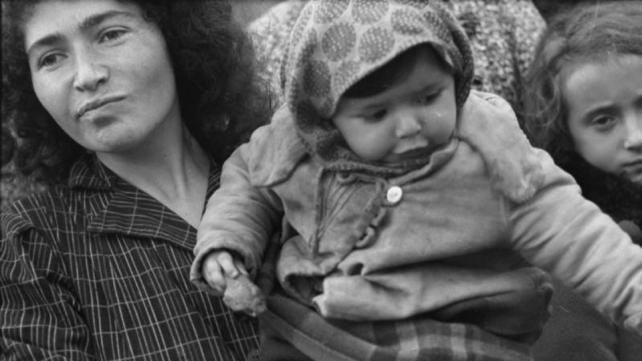
There are 2 billion mothers in the world (85.4 million in the U.S.).
There are 4.3 babies are born each second.
A sizable minority of children in rich countries live with just one parent — a parent who is likely to be female, and also likely to be working.
In Latin America and the Caribbean and the more developed regions households of lone mothers with children have higher poverty rates than those of lone fathers with children.
Women in the USA and around the world are waiting longer to start families. The average age of new moms was 25 in the USA and 29 in other developed countries such as Japan and Switzerland.
The top 5 places for mothers in the world in terms of maternal health are:
1. Norway
2. Australia
3. Iceland
4. Sweden
5. Denmark
The five worst are:
1. Afghanistan
2. Niger
3. Chad
4. Guinea-Bissau
5. Yemen
Out of a survey of university freshmen in Australia, 40% listed their moms as the most important and influential person they’d ever known, compared with 25% for fathers, 17% for romantic partners, 12% for friends, and 6% for siblings.
Mother’s Day
In 2009, there were 17,124 florists in the United States. Their 75,855 employees were be especially busy selling the Top Ten Mother's Day flower bouquets.
Perfume is one of the most popular gifts given on Mother's Day.
In most Arab countries, Mother’s Day is celebrated on March 21st. Egypt is the first Arab nation to publicly acknowledge Mother’s Day. They did this in 1956 with other nations joining in on the following years.
In Indonesia, Mother’s Day is celebrated nationally on December 22. This day is celebrated in remembrance of the first Indonesian Women Congress that was held from December 22 to 25, 1928.
In Pakistan and Saudi Arabia, Yaum ul-umm, is modeled after Western Mothers' Day and is marked by celebrations and feasts.
Fertility rates around the world
The world’s highest fertility rates exist in Niger, with an average of 7.75 children born per women. The world’s lowest fertility rates are found in Japan, South Korea, Taiwan, and Singapore, where an average of 1.2 children are born per woman.
Childbirth
Every 30 minutes, a pregnant woman dies in Afghanistan.
Each year more than half a million women around the world—roughly one woman every minute—die as a result of pregnancy complications and childbirth, 99% of which occur in developing countries. Yet many of these women’s lives could be saved if they had access to basic health care services.
One in four women who die during childbirth simply bleed to death. This can often be prevented by a medication that costs less than 99 cents.
The world’s worst maternal mortality rates exist in Afghanistan, Pakistan, India, Nigeria, and Ethiopia. Millions of women are forced to give birth without proper equipment and with only a family member or friend to help them.
Less than half of women in South Asia and Sub-Saharan Africa give birth with a skilled birth attendant, such as a doctor, nurse, or midwife, compared to 99% of women in the developed world.
Complications cannot be treated, so 350,000 women die in childbirth every year. That is one woman every minute. 90% of these deaths are preventable. The main causes of death are hemorrhage, hypertension, and infection.
One-third of all births worldwide are performed without a skilled professional.
In 2011, more than 50 million babies were delivered without the aid of a skilled birth attendant.
Adding 350,000 midwives overseas could save the lives of as many as 3.6 million mothers and children.
Educated Mothers Worldwide:
-channel more of their resources to the health and education of their children than men.
-are more likely to insist on education for their own children, especially their daughters. Their children study as much as two hours more each day than children of illiterate mothers and stay in school longer.
Mothers in the United States
The United States ranks 50th in the world in maternal mortality, with higher death rates than most European countries as well some in Asia and the Middle East, according to the World Health Organization.
Average number of children that U.S. women today can expect to have in their lifetime: 2.0
Tuesday is the most popular day of the week in which to have a baby, with an average of more than 13,415 births taking place on Tuesdays in 2008.
There were 5 million stay-at-home moms in 2010 — down from 5.1 million in 2009 and 5.3 million in 2008 (the estimates for 2010 and 2009 are not statistically different).
In 2010, 23 percent of married-couple family groups with children under 15 had a stay-at-home mother, up from 21 percent in 2000. In 2007, before the recession, stay-at-home mothers were found in 24 percent of married-couple family groups with children under 15.
Compared with other moms, stay-at-home moms in 2007 were more likely to be:
Younger
Hispanic
Foreign-born
Living with a preschool-age child
Without a high school diploma
$138,646: what stay-at-home moms would be paid for their work in the business world.
The proportion of mothers with a recent birth who were in the labor force increased from 57 percent in 2006 to 61 percent in 2008. Among states with higher than average levels of new mothers who were unemployed, the highest proportions were in Alabama (10 percent) and Michigan (9 percent), along with several states in the southeast United States.
There are 9.9 million single Moms living with children younger than 18 in 2010, up from 3.4 million in 1970.
Of the 4 million women 15 to 44 years old who had a birth in the last year, 1.5 million (38 percent) were to women who were not married, who were separated, or married but with an absent spouse. Of those 1.5 million mothers, 425,000 (28 percent) were living with a cohabiting partner.
Between 1996 and 2006, there was a 50 percent increase in the use of Caesarean sections in hospitals in the United States.
Since the 1960s, men’s contribution to housework doubled to more than 30 percent of the total. In the same period, the average working mother reduced her weekly housework load by two hours.
Between 1965 and 2003, women increased the time they spent with their children.
64 percent of daugters age 8 to 21 share a similar taste in movies as their mothers, and 44 percent share the same sense of fashion and clothing as their moms in the U.S.
70 percent of homes make an effort to recycle, but almost two-thirds of those families rely on the woman of the house to be the recycling enforcer.
Sources
Islamic Relief
The Family GPS study by Nickelodeon, 2010
The Council on Foreign Relations’ “What Works in Girls’ Education: Evidence and Policies from the Developing World”
National Center for Health Statistics
American Chemistry Council
http://www.census.gov/newsroom/releases/archives/facts_for_features_special_editions/cb11-ff07.html
http://www.now.org/issues/mothers/facts.html
http://economix.blogs.nytimes.com/2010/03/10/single-parents-around-the-world/
http://www.globalissues.org/article/166/womens-rights
http://unstats.un.org/unsd/demographic/products/Worldswomen/WW2010pub.htm
http://www.usatoday.com/news/health/2009-08-12-latebirths12_N.htm
http://www.savethemothers.org/learn-the-issues/statistics
http://www.mothersdayfun.net/185/how-mothers-day-is-celebrated-around-the-world/
http://abcnews.go.com/Health/maternal-health-numbers/story?id=15172525#.T6qCINWnfDM
http://www.happyworker.com/supermom/facts
Chicago Tribune, March 6, 2008. “Men picking up the slack, sort of”
http://abcnews.go.com/GMA/TakeControlOfYourLife/story?id=3120875#.T6qK99WnfDM
http://www.freakonomics.com/2007/05/11/the-immutable-influence-of-mothers/
Photo Attribution: Amphlett, Eduard - http://commons.wikimedia.org/wiki/File:Bundesarchiv_Bild_101I-317-0058-19A,_Polen,_Portr%C3%A4t_einer_Frau_mit_Kind.jpg








Add new comment